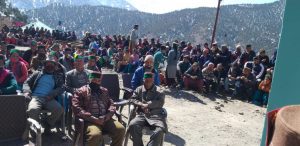Today Current Affairs: 31st October 2022 for UPSC IAS exams, State PSC exams, SSC CGL, State SSC, RRB, Railways, Banking Exam & IBPS, etc
Table of Contents
Emissions Gap Report 2022:

According to the recently released Emissions Gap Report 2022, current pledges by countries to reduce greenhouse gas emissions would still leave the world warmer by 2.4-2.6 degrees celsius by the end of the century. Emissions Gap Report 2022 provides an overview of, Emissions Gap, the difference between where greenhouse emissions are predicted to be in 2030 and where they should be to avert the worst impacts of climate change.
Key Findings:
- The top seven emitters (China, EU27, India, Indonesia, Brazil, the Russian Federation and the USA) plus international transport accounted for 55 per cent of global GHG emissions in 2020.
- Collectively, G20 members are responsible for 75 per cent of global GHG
- Global average per capita GHG emissions: The US at 14 tCO2e, followed by Russia at 13 tCO2e, China at 9.7 tCO2e, Brazil and Indonesia at about 7.5 tCO2e, and the European Union at 7.2 tCO2e
- India remains far below the world average at 4 tCO2e.
- The updated pledges by countries (NDC) under the Paris Agreement only reduce the projected greenhouse emissions by 1 per cent by 2030.
Pay Equity Policy : BCCI

The Board of Control for Cricket in India (BCCI) announced a “pay equity policy”, saying that its centrally-contracted men and women players would get the same match fees.
- The step is a significant move towards bringing gender pay parity as, according to Global Gender Gap Index 2022, at the current rate of progress, it will take 132 years to reach full parity.
- The women players will now get Rs 15 lakh per Test match, Rs 6 lakh for a One-Day International (ODI), and Rs 3 lakh for a T20 International.
- Till now, they were paid Rs 1 lakh for a white-ball match, and Rs 4 lakh for a Test.
- The annual retainership for women cricketers remains the same — Rs 50 lakh for Grade A, Rs 30 lakh for Grade B and Rs 10 lakh for Grade C.
- The men, who play more games, are paid Rs 1-7 crore, depending on their grade.
- India has become only the second country in international cricket to implement equal pay.
- New Zealand Cricket (NZC), in 2022, had struck a deal with the country’s players’ association, which enabled the women cricketers to earn as much as the male players.
- This comes four months after the United States’ women’s national footballers won the six-year-long battle with their federation to secure equal compensation.
Garuda VII Defense Exercise:

Indian Air Force (IAF) and French Air and Space Force (FASF) are participating in ‘Garuda VII’ at Air Force Station Jodhpur.
- It is being hosted by India for the fourth time so far.
- Garuda VII is the seventh edition of the bilateral air exercise between India and France that is taking place after a gap of two years.
- The first, third and fifth editions were conducted in India in 2003, 2006 and 2014 at Air Force Stations Gwalior, Kalaikunda and Jodhpur, respectively.
- In this exercise, FASF will participate with four Rafale fighter aircraft, one A-330 Multi Role Tanker Transport (MRTT) aircraft and a contingent of 220 personnel.
- The IAF is participating with Su-30 MKI, Rafale, Light Combat Aircraft (LCA) Tejas and Jaguar fighter aircraft, as well as the Light Combat Helicopter (LCH) and Mi-17 helicopters.
- The IAF contingent will also include Combat Enabling Assets like Flight Refueling Aircraft, Airborne Warning & Control System (AWACS) and Airborne Early Warning and Control (AEW&C).
World Sight Day 2022:

World Sight Day is observed globally on the second Thursday of every October.
- Theme for 2022: ‘Love your eyes’
- This year, World Sight Day is being observed on 13th October to draw attention to the issue of blindness and vision impairment among people.
- The day was first observed by the SightFirst campaign of the Lions Club International organisation in the year 2000.
- Since then, it has been integrated into the VISION 2020: The Right to Sight (V2020) plan.
- The V2020 plan which was launched in 1999 is coordinated by the International Agency for the Prevention of Blindness (IAPB) in cooperation with the World Health Organization (WHO).
2022 Forest Declaration Assessment:

The 2022 Forest Declaration Assessment was published, showing that the Deforestation rates worldwide declined only modestly in 2021 by 6.3 % compared to the 2018-20 baseline.
- Some 145 countries affirmed their commitment to halt and reverse forest loss and land degradation by 2030 at the 26th UN Climate Change Conference of the Parties (COP26) in Glasgow (2021).
- Forest Declaration Assessment publishes annual updates on progress toward global forest goals.
- In 2014, the New York Declaration on Forests (NYDF) was adopted as a political declaration calling for the end of natural forest loss and the restoration of 350 million hectares of degraded landscapes and forestlands by 2030.
Findings:
- Brazil was the world’s largest contributor to deforestation in 2021.
- The country marked a 3% rise in the rate of deforestation in 2021 compared to the baseline 2018-2020.
- Although Brazil didn’t show a large increase, its total deforestation rates each year remained high — making it the world’s largest contributor.
- Bolivia and the Democratic Republic of the Congo underwent deforestation at 6 % and 3 %, respectively.
- Global tree cover increased by 130.9 million hectares over the past two decades.
- Three-quarters of the global gain was concentrated in 13 countries.
- The most significant improvements were observed in Russia (28.4 %), Canada, the United States, Brazil, and China.
- China showed the largest net gain in tree cover — 2.1 million hectares (Mha). India also marked a gain of 0.87 Mha in tree cover.
- Globally, 118.6 Mha of the total tree cover gain is likely due to natural regeneration and assisted natural regeneration that occurred outside plantations.
- Gabon reduced deforestation by 28% in 2021 compared to 2018-20.
- The country implemented measures to combat illegal logging and the enforcement of protected areas.
- Indonesia reduced deforestation after implementing the forest moratorium and improved enforcement measures.
- The moratorium, which covers around 66 million hectares of primary forest and peatland (terrestrial wetland ecosystems), was first introduced in 2011 and has been renewed regularly as part of the efforts to reduce emissions from fires caused by deforestation.
- In Brazil, the decline in deforestation rates between 2004 and 2012 can be partly attributed to the coordinated implementation of the Action Plan for the Prevention and Control of Deforestation in the Amazon.
- It created protected areas and effective monitoring systems.
- Recent years have seen legal interventions in the European Union, Ecuador and India to protect forests.
- In 2021, a constitutional court in Ecuador upheld the rights of nature enshrined in the country’s constitution.
IMT TRILAT Exercise 2022:

The first edition of India-Mozambique-Tanzania Trilateral Exercise (IMT TRILAT), a joint maritime exercise among the Indian, Mozambique and Tanzanian navies commenced at Dar Es Salaam, Tanzania on 27 October 2022.
- Indian Navy is represented by the guided missile frigate, INS Tarkash, a Chetak helicopter and MARCOS (Special Forces).
- The exercise has three broad objectives:
- capability development to address common threats through training and sharing of best practices,
- enhancing interoperability, and
- Strengthening maritime cooperation.
- These exercises reflect India’s and the Indian Navy’s commitment to enhancing maritime security and cooperation with maritime neighbours in the Indian Ocean Region and promoting SAGAR, Safety and Growth for All in the Region.
Fourth Edition Of The Goa Maritime Symposium (GMS) 2022:

The fourth edition of the Goa Maritime Symposium (GMS) is being conducted by the Naval War College (NWC) at Goa from 31 October to 01 November 2022.
- The theme of GMS-2022 is “Maritime Security Challenges in the Indian Ocean Region: Converting Common Maritime Priorities into Collaborative Mitigation Frameworks”.
- The theme is underpinned by the idea of ‘Security and Growth for All in the Region’ (SAGAR) and five principles of Maritime Security enunciated by the Hon’ble Prime Minister of India.
- The participants of the Symposium comprise Captains/ Commanders and equivalent-rank officers from Navies/ Maritime forces from friendly foreign countries viz., Bangladesh, Comoros, Indonesia, Madagascar, Malaysia, Maldives, Mauritius, Myanmar, Seychelles, Singapore, Sri Lanka, and Thailand, besides India.
Goa Maritime Symposium (GMS):
- It was conceptualised and instituted by the Indian Navy in 2016.
- It is a forum for fostering collaborative thinking, cooperation and mutual understanding between India and key maritime nations of the Indian Ocean Region (IOR).
- The symposium is conducted biennially by the Naval War College (NWC), Goa, and three editions of the event have been organised thus far.
Uniform Civil Code : Gujarat Government Proposal To Constitute a Committee

The Gujarat government recently moved a proposal to constitute a committee to evaluate all aspects of implementing the Uniform Civil Code (UCC).
- A Uniform Civil Code is one that would provide for one law for the entire country, applicable to all religious communities in their personal matters such as marriage, divorce, inheritance, adoption etc.
- Article 44 of the Constitution lays down that the state shall endeavour to secure a Uniform Civil Code for the citizens throughout the territory of India.
- Article 44 is one of the Directive Principles of State Policy.
- These, as defined in Article 37, are not justiciable (not enforceable by any court) but the principles laid down therein are fundamental in governance.
- While Article 44 uses the words “state shall endeavour”, other Articles in the ‘Directive Principles’ chapter use words such as “in particular strive”; “shall in particular direct its policy”; “shall be obligation of the state” etc.
Uniform Civil Code (Goa):
- Goa, a former Portuguese colony, was incorporated into the Union of India in 1961. In 1987, Goa was made a separate state.
- The Uniform Civil Code (UCC) was introduced in Goa in the year 1870 by the erstwhile Portuguese rulers.
- It was retained even after the territory was merged with India in the year 1961.
What Is Red Mud?

CSIR- Advanced Materials and Processes Research Institute (AMPRI) has recently converted red mud into X-ray shielding tiles.
- It has converted red mud into X-ray shielding tiles in a green and economically viable manner through a ceramic route by adding a certain weight percentage of high Z material and binder with it.
- These tiles can be used to build radiation shielding structures in diagnostic X-rays, CT scanner rooms, Cath labs, bone mineral density, dental X-rays, etc., instead of the toxic lead sheet to protect the public from radiation hazards.
Red Mud:
- Red Mud is the waste generated in the Bayer process of alumina production from bauxite.
- It is also known as bauxite residue.
- Red Mud is defined as a “High Volume Low Effect Waste”.
- Nearly 1 to 1.5 tonnes of RM is being generated while producing one tonne of alumina from the bauxite ore through the Bayer process.
- It is considered to be toxic due to its extreme alkalinity and heavy element leaching.
- Annually about 175 million tonnes of red mud have been generated globally and stored in a specially designed clay-lined pond.
- Among that India is producing nearly 9 million tonnes of red mud every year.
- The clay-lined ponds often broke out and pollute soil, groundwater, and air and become fatal for both humans and wildlife.
- Red mud is one of the underutilized industrial wastes and getting accumulated over the years due to an increase in alumina production as well as inadequate technologies for its large-scale utilization.
- The red mud contains 30 – 55% of Fe2O3, which is suitable for attenuating high-energy ionizing radiations like X- and gamma rays.
Jangi Thopan Powari Hydroelectricity Project : Protest

“No Means No” campaign launched by a group of youngsters against setting up of new hydel projects in Kinnaur, Himachal Pradesh asking candidates of various political parties contesting in the upcoming Assembly election to give an affidavit, citing their proposed steps to deal with stopping construction of new hydel projects in Kinnaur.
- It is a proposed 804 megawatt project over the Satluj River.
- The run-of-the-river (ROR) project envisages construction of a concrete gravity dam of ±88 metre high above the deepest foundation level across river Satluj near Jangi village, and underground powerhouse on the right bank upstream of Tehsil boundary (Kashang Nallah).
- The diversion of water will involve construction of a 12-km-long tunnel.
- Construction of the dam will result in the submergence of about 156.2917 ha of land, out of which 143.2093 ha is forest land and 13.0824 ha is private.
- The length of the reservoir will be 10.6 km.
- Kinnaur district is mainly marked by its cold desert, tribal population, fragile topography, rich and diverse culture, apple orchards, off-season vegetables and the Satluj River.
- The river has been dammed at multiple places along the valley to create an additional feature to Kinnaur’s identity as Himachal’s hydropower hub, which locals believe is a malediction.
- An integral part of the old Hindustan-Tibetan Route, Jangram Valley, lies on the right bank of the Satluj river in the district.
- Another major impact is connected to the forest of Chilgoza pine, which has a patchy distribution across arid mountain valleys in Afghanistan, Pakistan and India.
- Kinnaur has the largest Chilgoza forests, covering an area of around 2,000 hectares.
- Chilgoza pine is well-known for its edible seeds and is rich in carbohydrates, proteins, and other medicinal values.
- It is classified as an endangered and rare tree species.
- Jangi, one of the affected Gram Panchayat from this JTP HEP, has one of the largest patches of chilgoza in the country, according to Himachal Pradesh’s State of Environment report.




